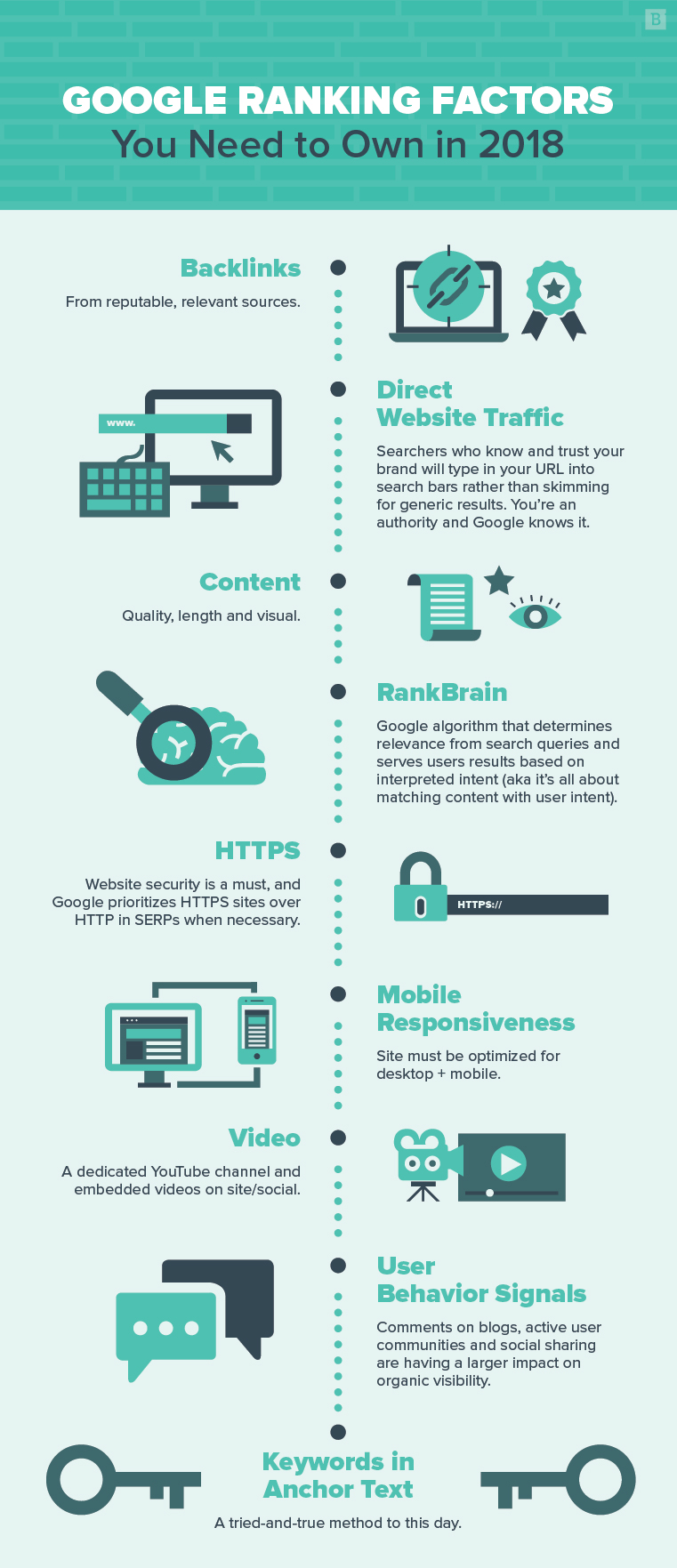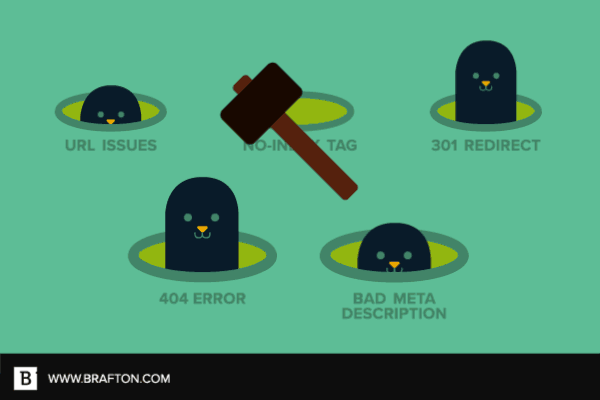Editor’s note: Updated October 2018.
More than 3 billion people have access to the internet.
As you can imagine, that’s a lot of search queries to process at any given moment.
Approximately 63,000 searches per second, to be precise.
So how do marketers target their ideal online audience?
The answer: search engine optimization.

Why do you need SEO?
Search engine optimization means positioning your company’s web properties higher in search results so more users can find you.
There are plenty of behind-the-scenes technical factors that play into SEO, but, at heart, it’s about assessing your current standing in search, identifying potential ranking opportunities and executing on content gaps.
Really, it’s a digital competition against every other web page on the internet.
You’re going to need tools and automation to help with this process. (That’s right here.)
And you can save time and resources by knowing the best keyword optimization techniques to use. (You guessed it. We’ve got that, too.)
More than anything, you need SEO because:
- 51 percent of all web traffic comes from organic search.
- 75 percent of online users never go past page one of SERPs.
- Inbound leads from SEO cost 61 percent less than outbound leads.
Compared to traditional marketing and advertising, SEO as a strategy is cheaper, more effective and better aligned with demographic, digital and purchasing trends.
How do SEO and content marketing fit together?
SEO and content marketing are inseparable; in fact, they’re practically synonymous.
Thorough, high-quality content feeds search engines, allowing your brand to own more SERP real estate and index a higher number of crawlable web pages.
Similarly, SEO ensures the content you produce is analytically sound, target audience-oriented and much likelier to serve searcher intent.
Every marketing plan must feature high-quality content and expert SEO insight.
High-quality content
Authoritative, trustworthy content is a must, not just for readers but search engines.
So much so that 72 percent of marketers say relevant content is their top SEO tactic.
Content that contains rich media, scannable action items and logical next steps for readers is inherently more valuable to readers than stale, surface-level writing, and Google’s algorithms prioritize this reality accordingly in SERPs.
On-page and off-page SEO
Content marketing strategies are handicapped without considering on- and off-page SEO.
On-page SEO refers to just that: anything directly to do with the metadata and the content that exists on a page. This means title tags, H1…H6 tags, URL strings, images, alt text, internal/external linking structures and more.
Off-page SEO refers to inbound link-building. Though not direct ranking indicators, social media engagement, influencer marketing and brand mentions provide adjunct off-page benefits as well.

What is an SEO marketing plan?
An SEO marketing plan is a documented system of every tactic, asset, execution and analysis of a site, its content and its reach.
This system must revolve around the talents of in-house or outsourced marketers, the value proposition of a brand and the nature of search engine algorithms.
Basic tenets of an SEO marketing plan include a(n):
1. Inventory of all site collateral and marketing materials
Assets should be shared with all appropriate stakeholders and be able to quickly be delivered to sales teams, executives and prospects at a moment’s notice.
2. SEO audit
SEO last year is different than it is this year. Knowing where your current strengths and weaknesses lie, which landing pages need refreshing and where Featured Snippet opportunities exist is paramount. An audit gives you a solid starting point.
3. Digital hierarchy of priorities that outlines benchmarks and next steps
Which metrics matter to the marketing team? What about the sales department? What about the CEO who doesn’t know a thing about mobile site traffic? How will you appease all of the above?
4. Regularly updated list of current keyword rankings and potential ranking opportunities
This is your SEO dashboard that spotlights the likelihood of ROI on given search terms. What’s working? What isn’t?
5. Editorial calendar and content schedule
A clear, well-documented content pipeline keeps all producers aware and engaged.
6. Content optimization goals for high-conversion pages
Updating existing content is now the industry norm, as opposed to churning out new content every day (if you can do both, that’s great). Landing pages that drive conversions are often square one in terms of choosing how to schedule out content optimizations.
7. Distribution, syndication and promotion channels and possibilities
As stated above, off-page SEO is important. Networking with relevant influencers, pitching industry publications and customizing social media posts pays off.
8. Automated metrics tracking and analytics reporting
To keep SEO marketing on track, you need daily performance metrics at your fingertips as well as monthly, quarterly and annual figures to show progress or justify changing course.
To achieve the SERP dominance you seek, you must not only be mindful of how search engines serve results but how they determine the quality of your work. That means your strategists, web managers and content creators must be singularly focused on the most prominent Google ranking factors, outlined below in this helpful graphic:

Is PPC a consideration?
Glad you asked, and the answer is yes.
While pay-per-click campaigns are by definition not under the same umbrella as “organic” or “SEO,” they can still be valuable complements to a content marketing strategy.
Also remember that paid ads appear at the TOP of SERPs, so there is definitely value in crowding out the organic results of competitors and owning the branded keywords that searchers are querying.
One of our asset management clients paired SEO and PPC to reduce their total cost-per-lead 63 percent.
How to kick-start your SEO marketing plan
Knowing what goes into a successful SEO marketing plan is a victory unto itself. But how do you launch one?
Where to focus your investments
If you’re starting from scratch, you need a few things:
- Site audit: What’s your Domain Authority? What’s your page speed? Are you using structured data?
- Content audit: How much collateral do you have that can immediately be repurposed and republished? How much content will be needed to achieve your SEO goals? How diverse should your content be?
- Competitor audit: Who are your primary, secondary and tertiary competitors? What do they rank for? What do their link profiles look like? Do they have a coherent social strategy?

Knowing where your strengths and weaknesses lie, as well as those of your competitors, allows you to home in on keyword targets and ranking potential.
Quick wins
Setting marketing aside for a moment, you also need to know who cuts your checks.
We see it every day: Stressed marketing manager is given three months to show ROI or his or her budget is nixed.
That means you need to come out swinging, with quick SEO wins to prove the value of content marketing.
Here are a handful to get you started:
- Improve site speed. Optimal page speed is 1.5 seconds or less.
- Optimize for mobile. Google now uses mobile-first indexing, so this is a must.
- Fully update your Google My Business account.
- Fix site errors.

Longer term initiatives
As a general rule, content marketing ROI doesn’t normally materialize until month six or later. But once you lay the groundwork, SEO marketing victories tend to snowball: Your Domain Authority rises, your social media engagement improves, your content generates more leads, etc.
Six months to a year out, your SEO goals should be:
- Qualified lead generation.
- Shortened sales cycle.
- Lower CPC.
- Bottom line ROI.
- Additional marketing investment.
Examples of winning SEO strategies
One of our clients came on board with a flat URL structure and was concerned their industry was way too niche to even rank for keywords.
Through a series of technical SEO cleanup, advanced keyword research and landing page optimization, we were able to get our client ranking on Page One for five of their most critical keywords.

Lesson: Fix all site errors first and then optimize existing copy for immediate SEO gain.
Another client in the consumer products space was unclear on how to attribute ROI to their content marketing. They came to Brafton in need of fresh blog content across seven brands.
We were able to drive not only higher traffic and engagement but actual revenue from our optimized content. For an $833,000 investment, the client earned $4.03 million in revenue attributed to Brafton content marketing.

Lesson: You can draw a straight line from SEO to ROI. To show results, focus on metrics that matter (aka money).
Have questions? Let us know.



